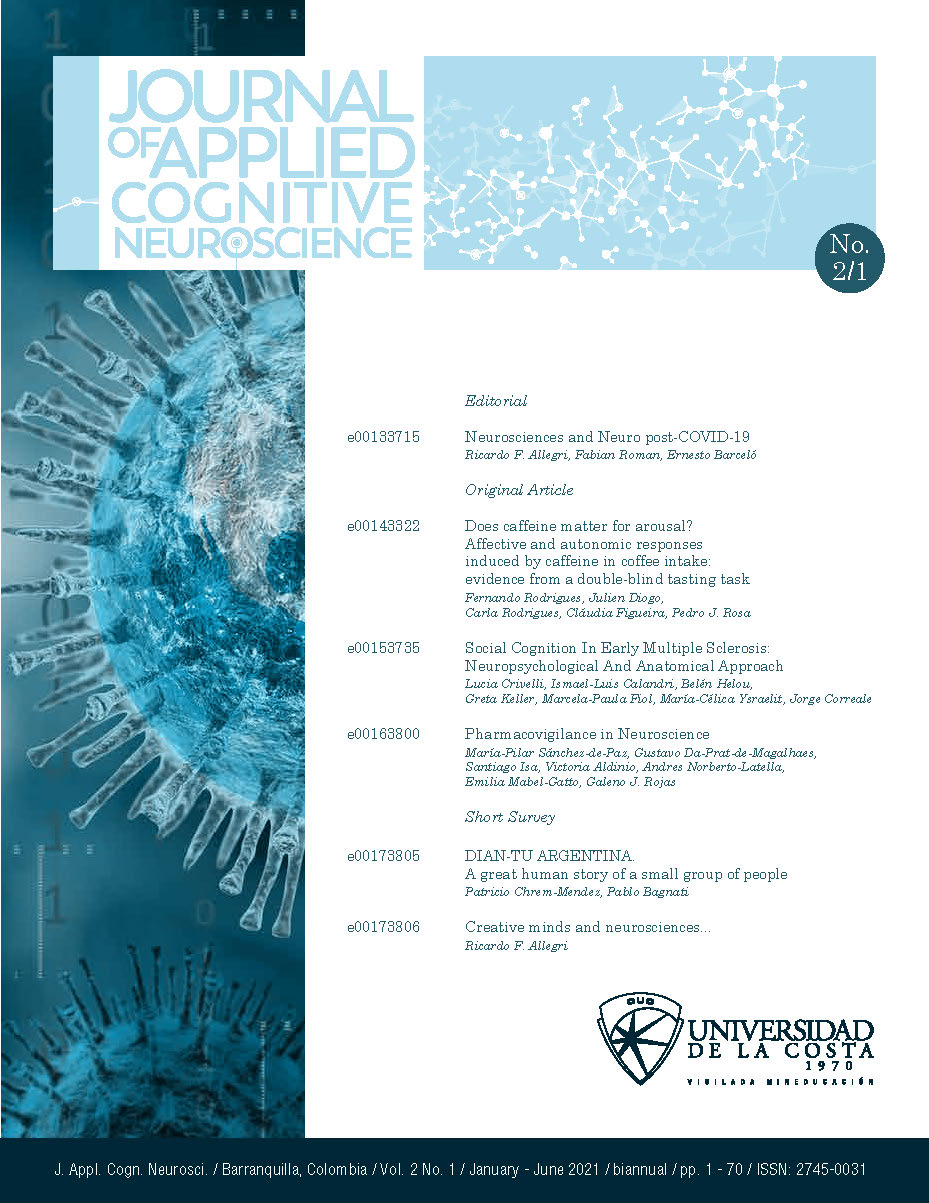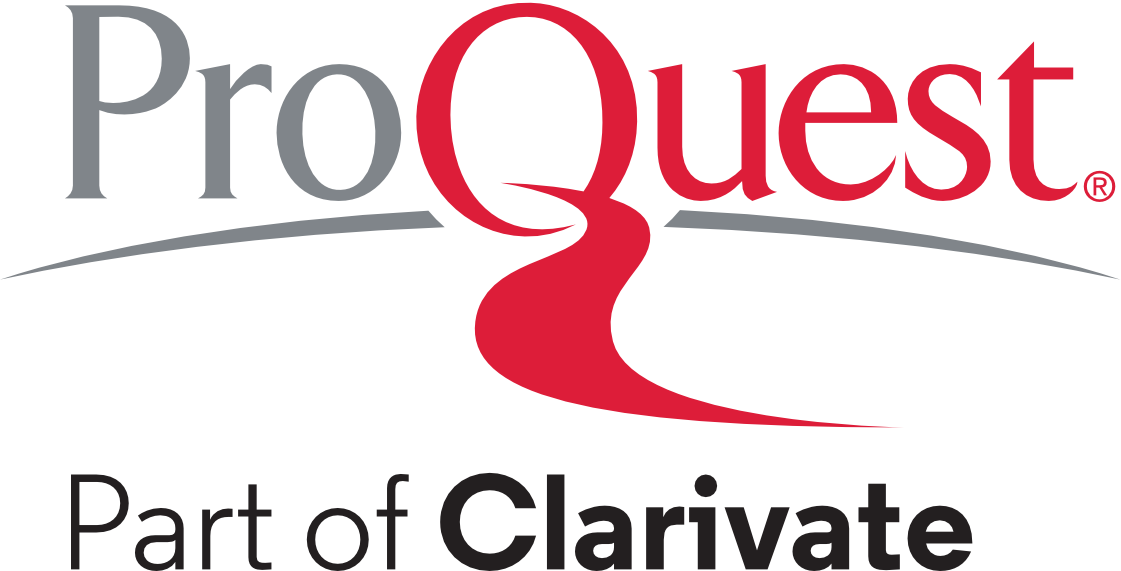Mentes creativas y neurociencias...
Mentes creativas y neurociencias...
DOI:
https://doi.org/10.17981/JACN.2.1.2021.06Palabras clave:
Creativity, intelligence, divergent thinking, psychiatry, neurology, anatomyResumen
Creatividad es la habilidad de generar ideas originales en arte o ciencia, dejando atrás los estereotipos y produciendo innovaciones en el contexto social en el cual ocurren. Creatividad es asociada con pensamiento divergente que prioriza la generación de múltiples soluciones diferentes a las tradicionales. Algunos autores refirieron que era muy frecuente los trastornos afectivos en los pacientes creativos, esto probablemente mas relacionado a la hipomanía o la desinhibición como también ocurre en la demencia fronto-temporal. Estas regiones cerebrales fueron descriptas en los trabajos con resonancia funcional. La creatividad es una de las características mas relevantes que posee el ser humano.
Descargas
Citas
Andreasen, N & Ramchandran K. (2012). Creativity in art and science: are there two cultures? Dialogues in Clinical Neurosciences, 14(1), 49–54.
https://dx.doi.org/10.31887%2FDCNS.2012.14.1%2Fnandreasen
Andreasen, N. (2008). The relation between creativity and mood disorders. Dialogues in Clinical Neurosciences, 10(2), 251–255.
https://dx.doi.org/10.31887%2FDCNS.2008.10.2%2Fncandreasen
Benedek, M.; Jauk, E.; Fink, A.; Koschutnig, K.; Reishofer, G.; Ebner, F. & Neubauer, A. (2014). To create or to recall? Neural mechanisms underlying the generation of creative new ideas. Neuroimage, 88, 125–133.
https://doi.org/10.1016/J.NEUROIMAGE.2013.11.021
De Souza, L. C.; Guimaraes, H. C.; Texeira, A. L.; Caracmelli, P.; Levy, R.; Dubois, B. & Volle, E. (2014). Frontal lobe Neurology and the creative mind. Frontiers in Psychology, 5, 1–9.
https://doi.org/10.3389/fpsyg.2014.00761
Galton, F. (1869). Hereditary genius: an inquiry into its laws and consequences. London: McMillan.
Gonen-Yaacovi, G.; de Souza, L. C.; Levy, R.; Urbanski, M.; Josse, G. & Volle, E. (2013). Rostral and caudal prefrontal contribution to creativity: a meta-analysis of functional imaging data. Frontiers in Human Neuroscience, 7, 1–22.
https://dx.doi.org/10.3389%2Ffnhum.2013.00465
Hare, E. (1987). Creativity and mental illness. British Medical Journal (Clinical research ed.), 295(6613), 1587–1589.
https://dx.doi.org/10.1136%2Fbmj.295.6613.1587
Hemphill, R. E. (1961). The illness of Vincent Van Gogh. Proceedings of the Royal Society of Medicine, 54(12), 1083–1088.
https://doi.org/10.1177%2F003591576105401206
Lombroso C. (1981). The man of genius. London: Walter Scott.
Serrano. C.; Allegri, R.; Martelli, M.; Taragano. F. & Ranalli, P. (2005). Visual Art, Creativity and Dementia. Vertex, 16(64), 418–429. Disponible en
http://www.polemos.com.ar/vertex64.php
Serrano, C. M. y Allegri, R. F. (2005). Demencia Frontotemporal: un nuevo enfoque a través del arte. Revista Neurológica Argentina, 30(1), 43–50.
Simonton, D. K. (2012). Quantifying creativity: can measures span the spectrum? Dialogues in clinical neuroscience, 14(1), 100–104.
https://dx.doi.org/10.31887%2FDCNS.2012.14.1%2Fdsimonton
Sun-Hyung, P.; Kwang Ki, K. & Jarang, H. (2016). Neuro-Scientific Studies of Creativity. Dementia and Neurocognitive Disorders, 15(4), 110–114.
https://dx.doi.org/10.12779%2Fdnd.2016.15.4.110
Thomton, E. M. (1986). The Freudian fallacy. London: Paladin.
Zaidel, D. W. (2014). Creativity, brain, and art: biological and neurological considerations. Frontiers in human neuroscience, 8(389), 1–9.
Descargas
Publicado
Cómo citar
Número
Sección
Licencia
Derechos de autor 2021 Journal of Applied Cognitive Neuroscience

Esta obra está bajo una licencia internacional Creative Commons Atribución-NoComercial-SinDerivadas 4.0.
Usted es libre de:
1. Compartir - copiar y redistribuir el material en cualquier medio o formato.
2. El licenciante no puede revocar estas libertades siempre que usted respete los términos de la licencia.
Bajo los siguientes términos:
1. Atribución - Usted debe dar el crédito apropiado, proporcionar un enlace a la licencia, e indicar si se hicieron cambios. Puede hacerlo de cualquier manera razonable, pero no de forma que sugiera que el licenciante le respalda a usted o a su uso.
2. NoComercial - No puede utilizar el material con fines comerciales.
3. NoDerivados - Si remezcla, transforma o construye sobre el material, no puede distribuir el material modificado.
4. Sin restricciones adicionales - Usted no puede aplicar términos legales o medidas tecnológicas que restrinjan legalmente a otros de hacer cualquier cosa que la licencia permita.


 English
English
 Español (España)
Español (España)










